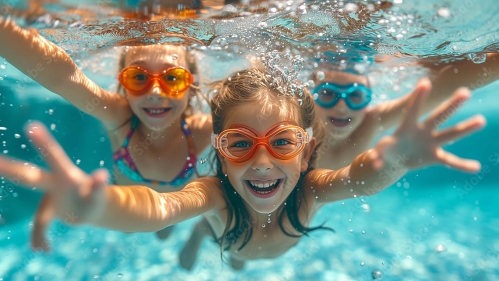Emergency department physician Erin Muckey discusses how adults and children can stay safe while trying to stay cool this summer
The Consumer Product Safety Commission recently released its annual drowning and submersion report, which shows that drownings for children under age 15 increased 12 percent in one year.
“Drowning is the leading cause of death among children ages 1 to 4 and can tragically occur silently and quickly,” said Erin Muckey, an assistant professor of emergency medicine at Rutgers New Jersey Medical School and medical director of the emergency department at University Hospital in Newark.
The Rutgers Health expert discussed how adults and children can stay safe near bodies of water.
What are some preventive measures adults can take to ensure children’s safety around water?
Supervision is critical, and this includes having a designated adult “water watcher” whenever children are around a body of water — a pool, hot tub, ocean, river, lake. This person should not be distracted by their phone or any other responsibility and is important even if a lifeguard is present. Remember that lifeguards are scanning a large area, not watching your individual child. Parents should also teach children how to swim early, and even basic swimming skills can be lifesaving. If tragedy does occur, it is important for all caregivers to be trained in CPR.
To prevent accidental water entry, homeowners should implement practical safety measures such as installing fences with self-closing and self-latching gates, setting up alarms and using drain covers in pool and spa areas. If a young child is missing near an unsecured body of water, check the water first.
Novice swimmers and young children should wear a U.S. Coast Guard–approved life jacket when around open water in the event of falls. It is important to recognize that floatation devices like toddler swim vests and water wings are not necessarily designed to keep a child’s face out of the water while floating. Children must still be closely supervised while wearing them.
How can adults stay safe around water?
Adults should never swim or boat alone or while consuming alcohol or using other adult recreational substances. This includes kayaks, paddle boards or other types of watercrafts. Particularly for open water and boating, adults should wear a U.S. Coast Guard–approved life jacket regardless of their swimming skill. Never dive into shallow water or water you cannot see the bottom of. There may be hidden dangers such as rocks even in deep water.
How fast can drowning occur?
In seconds! People erroneously believe that drowning is noisy, that they will hear someone splashing and will have time to act. However, drowning is silent and can happen fast. Remember, too, that young children can drown in even a few inches of water. Watch children when they are in water at all times.
What are the signs that someone is in distress or drowning?
A swimmer in distress or actively drowning might be trying to swim without making forward progress. So, they might be vertical, but unable to move forward or tread water. You may see them pressing down with their arms at their sides to try to keep their head above the water. Even though still conscious, these swimmers must be aided immediately.
A passive drowning victim is motionless and submerged or floating face down. Immediate rescue is critical, including starting CPR on the person once he or she is safely out of the water if necessary. Never assume that someone is joking.
What are some misconceptions about water safety?
Misconceptions include the following:
“If a child or adult knows how to swim, they don’t need life vests.” A child or adult who swims well may not need to wear a life vest at a pool with a lifeguard but would need to in areas where drowning risk escalates, such as the ocean or rivers with strong currents that can drag children and adults quickly.
“If a child or adult knows how to swim, they can’t drown.” Even strong swimmers can become unexpectedly incapacitated due to injury water conditions. This is why it is important to never swim alone.
“Water safety only needs to be focused on when people are in or around the water.” Drowning also can occur outside of planned “pool time.” This is where preventative measures to secure pools and spas in your home and community are crucial.
What should you do if you suspect someone is drowning?
First, call for help. Next, while your instinct may be to jump in after a drowning victim, in open or dangerous water this may put your own life at risk. The teaching is “reach or throw, don’t go,” meaning that you should try to reach out to the person directly or with an object to be grabbed or throw a flotation device, ideally one with a rope. Once the person is safely out of the water, check for responsiveness. If none, place the person on his or her back on a firm surface, give rescue breaths and begin CPR.
Should people be concerned about drowning if they do not visit pools or other bodies of water?
Drowning can also occur in the home: Toddlers have died from toppling into buckets, garden ponds, toilets and in bathtubs. Keep children out of bathrooms and do not leave buckets out where they can collect water. Even if you do not have a pool, a child may unexpectedly encounter one. Teaching children about pool safety is important regardless of your home environment.




